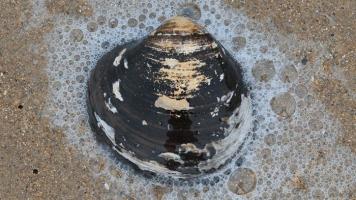Copy Link
Add to Bookmark
Report
Mead Lovers Digest #0995

From: mead-request@talisman.com
Errors-To: mead-errors@talisman.com
Reply-To: mead@talisman.com
To: mead-list@talisman.com
Subject: Mead Lover's Digest #995, 21 February 2003
Mead Lover's Digest #995 21 February 2003
Forum for Discussion of Mead Making and Consuming
Dick Dunn, Digest Janitor
Contents:
Eucalyptus honey ("phil")
small batches ("phil")
Re: Dry ice (Phil)
Re: MLD #994, 16/2/03; plastic vessels; siphon starters; Braggot recipe ("...)
Re: plastic carboys ("Dan SCHULTZ")
Sourwood Honey ("Jodie Davis")
Re: Mead Lover's Digest #994, 16 February 2003 ("Maurice St. aude")
The Meadmaker and the Historian ("Dan McFeeley")
Re: Mead Lover's Digest #994, 16 February 2003 ("Sergi Santacana Juan")
Mead & Sulfites ("Sergi Santacana Juan")
303 SS for food use? (Dick Dunn)
NOTE: Digest appears when there is enough material to send one.
Send ONLY articles for the digest to mead@talisman.com.
Use mead-request@talisman.com for [un]subscribe/admin requests.
Digest archives and FAQ are available at www.talisman.com/mead. There is
a searchable MLD archive at hubris.engin.umich.edu/Beer/Threads/Mead
----------------------------------------------------------------------
Subject: Eucalyptus honey
From: "phil" <pcwojdak@earthlink.net>
Date: Sun, 16 Feb 2003 11:42:05 -0800
Hi all,
I have made my first three melomel's and I want to try a traditional
mead. Well, first I bought the last six pounds of Eucalyptus honey from
my local beekeeper. It's light amber and has lots of complexity and no
medicinal qualities. If I had more, I would go ahead and make 3 or so
gallons of traditional mead with it. I've been looking on the internet
and I can't find anymore. Now, I don't know what to do with it. I have
some buckwheat, wildflower, and sage honeys I could mix it with.
Anyone have any ideas of how best to use the eucalyptus honey?
My beekeeper also has some amazing orange blossom honey. It has strong
orange tones and smells like orange blossoms. He says it's the best
year he had for orange blossom honey because there was nothing else
blooming at the time. Would this make good or boring traditional mead?
Phil
------------------------------
Subject: small batches
From: "phil" <pcwojdak@earthlink.net>
Date: Sun, 16 Feb 2003 12:59:11 -0800
Hi again,
Re my eucalytpis honey, can I make a gallon and a half in a three gallon
carboy?
Phil
------------------------------
Subject: Re: Dry ice
From: Phil <dogglebe@yahoo.com>
Date: Sun, 16 Feb 2003 16:08:20 -0800 (PST)
> hay any one eve used dry ice in making mead i was
> thinking of usling it to
> clear the oxigen out of the carboy befor i put the
> must in . and i might be
> handy to chill a mead to make the lees settel out .
> any ideas experences on
> this ?
There's no reason to purge the air out of the primary
fermenter. In fact, you need to aerate the must for
it to ferment.
Dry ice has been discussed in rec.crafts.brewing. No
one reccomends using it as it's not as clean as one
might think. Sometimes it containd dirt and oils.
Putting dry ice into an empty carboy may cause it to
brerak.
Phil
=====
visit the New York City Homebrewers Guild website:
http://www.homebrewersguild.org
------------------------------
Subject: Re: MLD #994, 16/2/03; plastic vessels; siphon starters; Braggot recipe
From: "Arthur Torrey (no spam please!)" <atorrey@cybercom.net>
Date: Sun, 16 Feb 2003 19:16:16 -0500
On 2003.02.16 14:28 mead-request@talisman.com wrote:
>
> Subject: Re: plastic carboys
> From: rcd@talisman.com (Dick Dunn)
> Date: Tue, 11 Feb 2003 09:59:21 -0700 (MST)
>
> "Arthur Torrey" <atorrey@cybercom.net> wrote:
> > No problem with plastic in a primary fermentation, as the CO2 generated
> > by the fast fermenting yeast keeps the pressure in the vessel high enough
> > to keep the oxygen from diffusing through the plastic into the must and
> > damaging it through oxidation...
>
> Not true. It seems logical, but it's not the way the physical chem works.
> The inside/outside pressures of different gases act independently; O2 will
> still move through the wall of the fermenter if it's permeable (which for
> food-grade "buckets" it is).
>
> The real reason it doesn't matter much for the primary fermentation is that
> it doesn't last very long and the yeast are using some oxygen (at first)
> anyway.
<snip>
You are absolutely correct Dick (and the others who have made similar
comments) thanks for the clarification. At any rate, the bottom line
seems to be the same, plastic is probably OK for primary fermentation, and
maybe for secondary, but not for long term storage...
- -------------------------------------------------------
> Subject: siphon starters for small batches
> From: Ben Snyder <devlyn76@optonline.net>
> Date: Tue, 11 Feb 2003 12:40:54 -0500
>
> hi all
>
> can anyone recommend a siphon starter for small 1 gallon batches?
<snip>
> thanks,
> - -ben
I haven't tried it (I'm not tired of the old fashioned way, and I'm
cheap... ;-}) but my supplier has a 'self starting' racking cane that
looks a cross between a racking cane and a frame mount bicycle tire pump -
apparently the idea is that you stick it in the carboy and stroke it to
get things going, then the siphon pressure holds the check valves open and
it free flows. I'm not sure what the brand is, but I think its the same
company that makes the 'double blast' bottle washers, so it should be
pretty easy to find.
> ------------------------------
> Subject: Braggot suggestions
> From: E Johnson <ebjohnson_2000@yahoo.com>
> Date: Tue, 11 Feb 2003 14:43:07 -0800 (PST)
>
> I have been brewing meads for a while and recently
> made my first beer. Now I want to try my hands at a
> braggot.
>
> I am wondering if anyone out there has made a braggot
> that they really liked and was willing to share the
> recipe or at least some incite into making a recipe.
> I am curious how much malt to use relative to honey,
> steeping grains, better with or without hops, ale or
> wine yeast, these sorts of questions.
>
> Having never actually tasted a braggot -- how much
> honey character makes it to the final product? Or are
> they just a waste of perfectly good honey? ;-)
>
> Thanks!
> Erik Johnson
I have one recipe that I have made and like enough that I have a second
batch sitting in primary as we speak.
My preference is for dark beers, I don't drink beer that can be seen
through, on the theory that if you can see light through it, you don't
know how many horses got to drink it first... ;-} In my lexicon, Guinness
counts as a nice light beer.
This is an adaptation of a 'kit box' recipe from my local supplier,
essentially what I did for a starting point as a guess is to substitute an
equal amount of honey for one of the two cans of malt. I wouldn't say the
honey makes a great deal of difference, but there is a bit of a honey
flavor to the brew. It shows a slightly higher initial S.G. than the kit
recipe says I should have, but that may be due to the fact that I really
squeeze and sparge out the grains as it is to any difference from using
honey instead of malt. (Judging by the way it pours at least, I am
guessing that malt syrup and honey have similar sugar content and effect
on S.G.)
I don't have a strong opinion on whether it is worth it or 'a waste of
good honey' - My first two seasons as a beekeeper have left me with enough
honey that I look for excuses to use it in just about anything. I also
give alot away to friends and relatives, etc. Thus for me at least the
honey is 'free', but I have to pay for malt syrup. Like I said in an
earlier message, I'm cheap... ;-}
Here is the recipe, most of it is as the beer kit had things, I have
noted exceptions as appropriate.
CHOCOLATE CHERRY HONEY PORTER
Yield - 5 Gallons. Start S.G. 1.042 - 1.045 (Per recipe, I got ~1.056)
Finish S.G 1.008 - 1.016
Ingredients:
1 - 3.3 lb cans Amber Malt Extract
1 - 3.3 lb measure (I used an empty can from an earlier batch) honey, (I
used one of my darker batches)
1 lb Crystal Malt
1/2 lb Chocolate Malt
1/4 lb Black Malt
6 oz (I used an 8 oz package) Unsweetened Chocolate (Bakers)
1 oz Fuggles Hops Pellets
1 oz Tetnang Hops Pellets
1 pkg Burton Water Salts
1 tsp Irish Moss
4 oz Bottle Natural Cherry Flavor Extract (Crosby & Baker)
3/4 cup Priming Sugar
English or Irish Ale yeast (I used a package of Safale s-04 dried ale
yeast, which is my favorite beer yeast, it is fast, easy to use, and very
reliable)
Process:
1. Put ~2 gallons water in brew pot. Crush grains and tie in bag. Bring
to a boil, then remove heat and let grains steep for 30 minutes.
2. While grains are steeping, carefully melt chocolate in double boiler.
I also find it helpful to put the open containers of malt syrup and honey
in a hot water bath as this makes them easier to pour.
3. Remove grains, (I squeeze the bag and rinse with cold water a few times
to try and get as much good stuff out of the grains as possible) Add the
Malt Syrup, Honey, Chocolate, and Fuggles hops (put the hops in a bag)
Bring back to boil, Boil 30 minutes
4. Add 1/2 oz. Tetnang hops (NOTE THIS IS ONLY *ONE HALF* of the Tetnang
hops!) in a bag, the Water Salts, and the Irish Moss. Continue to boil
for 15 Minutes
5. Add the other 1/2 oz of Tetnang hops Boil for 5 minutes
6. Cool, put in primary fermenter, add water to make 5 gallons (I make it
closer to 6) Pitch yeast.
7. When fermentation is complete, rack to bottling bucket with Cherry
Flavoring and priming sugar. Bottle.
8. Let age in bottle at least 4 weeks - supposedly will improve for at
least 6 months if you let it last that long...
>
> Subject: help needed for first batch
> From: Linda Short <lc_otter@yahoo.com>
> Date: Thu, 13 Feb 2003 11:29:51 -0800 (PST)
>
> My friend down in Huntsville just started his
> first batch of mead. This is his first time
> brewing anything. It's a traditional mead.
>
> He used champaigne yeast. The fermentation seems
> to be stuck. It's only been in the carboy for 4
> months. He's wondering whether to rack to another
> carboy or bottle.
>
> The liquid inside has begun to clear, but right
> now it's only clear enough to see the light from
> a flashlight. It isn't clear enough to read a
> newspaper.
>
> - -Linda-
Are you SURE it's a stuck fermentation, and not one that has just gone
to completion? My experience with champagne yeast (Lalvin 1118) is that
this is a VERY fast yeast, the meads I've made with it have pretty much
stopped fermenting in a month or so, not because they were stuck, but
because they had fermented to near total dryness (SG ~0.996) and an
amazing alcohol content of about 19%
This was with a cyser, a pyment, and a cranberry based mead. I also
always add yeast nutrients so my yeasts have plenty to chew on besides the
sugars in the honey.
What is the S.G. of your friend's mead? Anything below about 1.010
suggests that it has reached completion rather than being stuck. If it is
above that, you are probably stuck, and should consider adding more yeast
nutrients, or possibly another shot of yeast.
If the S.G. is at the completed level, I would add a clarifying agent
(bentonite, Keilsol, etc.) let it settle for a few weeks, and rack to
another carboy. Repeat as needed until the mead is clear and the taste is
acceptable.
ART
------------------------------
Subject: Re: plastic carboys
From: "Dan SCHULTZ" <s_danno@msn.com>
Date: Sun, 16 Feb 2003 19:29:51 -0800
The plastic carboys are polycarbonate.
O2 permeation during active fermentation is not a concern. Any O2 that
penetrates is either used up by the yeast or scrubbed out by the CO2
generated. I would not use them for long term storage after fermentation is
complete, say 6 months but 2 or 3 months is ok. Anybody who says different
should provide REAL data.
- -Dan Schultz
------------------------------
Subject: Sourwood Honey
From: "Jodie Davis" <JodieDavis@adelphia.net>
Date: Wed, 19 Feb 2003 18:18:16 -0500
A local beekeeper has sourwood honey. Is this a mild honey? What kind of
an impact will it have on the flavor of mead? Any suggestions of types
of recipes in which to use it?
Thanks for any info,
Jodie Davis
Bottling my second mead today in North Georgia
------------------------------
Subject: Re: Mead Lover's Digest #994, 16 February 2003
From: "Maurice St. aude" <bludrgn@sympatico.ca>
Date: Thu, 20 Feb 2003 22:21:24 -0500
If you are talking about using the blue plastic water bottles that you get
your water in as a plastic carboy, don't they were difinitely not designed
to hold alcohol and they state that right on the bottle. The alcohol leeches
some of the plastics ingredents out of the bottles, and the resulting brew
can have some serious health effects. There was a cause of poisoning out
this way a few years back to due to brewing in those things. While I'm at it
do not cover your primaries with black garbage bags. These bags are treated
to prevent bacterial grouth and control oder. This to can cause heath
problems. My apologies to those who of you who knew this already, but I
thought the warning might me worth any flack I take for wasting your time.
- ----- Original Message -----
From: <mead-request@talisman.com>
To: <mead-list@talisman.com>
Sent: Sunday, February 16, 2003 2:28 PM
Subject: Re: plastic carboys
> From: rcd@talisman.com (Dick Dunn)
> Date: Tue, 11 Feb 2003 09:59:21 -0700 (MST)
>
> Dave Polaschek <davep@davespicks.com> wrote:
> > If you're talking about the plastic carboys from bottled water, I'm a little
> > leery of them, as they don't seem terribly sturdy. Things get banged around
> > in my kitched sometimes, especially when I'm wrestling large containers of
> > water, honey or malt around during brewing...
>
> Dave, I've also wondered about how strong those bottles are, but the thing
> that argues in their favor is that bottled-water companies use them, and
> keep re-using them. I'd think that if they survive being banged around,
> loaded into a truck and bounced around, then banged around some more on
> their way to the cooler, they can't break very often or the water suppliers
> would be upset and demand a different solution.
>
> They are clearly (oop) a different material from the opaque plastic
> buckets, but what are they? PET?
>
> The question that bugs me about them is this: OK, they're rated just fine
> for *water*, but are they really OK with *alcohol*? Holding a 10% solution
> of ethanol in a container for a month or two might be a challenge that
> wasn't really considered in designing a water container. Will the alcohol
> dissolve or leach out anything not-nice?
------------------------------
Subject: The Meadmaker and the Historian
From: "Dan McFeeley" <mcfeeley@keynet.net>
Date: Fri, 21 Feb 2003 10:44:21 -0600
A while ago I was getting bugged by a persistent idea that
I couldn't shake, something along the lines of a similarity
of some kind between folk music, and mead lore and tradition.
It didn't make sense, but the thought wouldn't go away.
A little backtracking here -- over the years I've cultivated a
passion for folk music from the British Isles, now known as
Celtic music, or, to the folk from the British Isles themselves,
traditional music. Certainly the music is often lively and fast,
with a unique sound that stamps its identity as "Celtic." There
is a powerful historical dimension to this music, however,
often lost on outsiders who aren't aware of it. This dimension
is something fluid and dynamic, resistant to analysis because
much of this music was orally transmitted from generation to
generation. The tunes are the same, but the names will sometimes
change, along with the stories that explain the tunes.
The cobwebs began to clear when I started looking at history as
either linear or non-linear. Linear styles of history are what we
learn in school. There is a recounting of events, set in a chronological
order or pattern, and the cause/effect change is straight forward and
linear. Actual history is not quite so simple. Human events seem
to move forward on waves of what can sometimes be characterized
as simple social chaos. The "great persons" theory of history, i.e.,
that vast historical changes take place only when specific individuals
initiate them, doesn't necessarily hold true.
The history associated with Celtic traditional music is sometimes linear,
such as the Jacobite tunes, but there is a nonlinear side to it that can
dominate the music entirely. The best example that I can think of is
the music of Turlough O'Carolan, Ireland's most beloved harpist, who
lived from 1670 to 1738. O'Carolan was an innovative musical genius
but clearly a product of his time. He was one of the last of Ireland's
itinerant harpists, earning his living from patrons. His compositions
were his own, of course, but also show the influence of Italian
Baroque, along with the musical heritage of the ancient harpists
of Ireland, passed down through oral tradition and now lost to us.
Put on a cd of Patrick Ball, story teller and master of the Celtic harp,
listen to his renditions of O'Carolan's music and, if you let your
imagination go, you may just hear the whispers of the ghosts of
the ancient Irish harpists, still speaking to us through O'Carolan's
music.
This is what I mean by the nonlinear historical dimension present
in old traditional music.
The lore and traditions of meadmaking also have this nonlinear
dimension, via the medium of taste. A Bronze age site excavated
in Ashgrove, Scotland, showed that a fermented drink using honey,
very likely mead, had been placed in the grave. The honey does
not seem to originated from the immediate area, as shown by the
presence of Tilia cordata, a small leaved lime tree found in what
is now England. Why would these pre-Celtic peoples have used
imported honey? What was significant about this particular honey
to them? Mead was also found at the Hochdorf site in Germany,
a Celtic site. Apparently this mead, actually a metheglin, as we
would categorize it today, showed the presence of over 100
different plants and herbs, some of which would have been
imported from great distances. As in the Ashgrove findings,
there are many unanswered questions regarding the history of
beekeeping, the honey trade, meadmaking, and so on.
Much of the way mead history is presented these days runs
along the line of Celtic warrior/Viking berserker themes. The
historical section in Acton & Duncan's meadmaking book
is exemplary here. Charlie Papazian did a great service to
the mead community by having Robert Gayre's book,
_Wassail! In Mazers of Mead_ reprinted, still, as influential
as the book has been, it was been criticized as being notably
myopic in regards to mead and mead history. An important
book on mead lore and history, it both stimulated interest
in the subject while at the same time obscuring it. Acton
& Duncan's book was clearly written with an open copy of
Gayre's book on the one hand and an open bottle of mead
(which they cheerfully admit to) on the other.
Although mead played an important role in the warrior cultures
of the Celts, Anglo-Saxons and Vikings (see Michael Enright's
_Lady with a Mead Cup_ on this), there is also the life and
culture of the small farming communities of these peoples
in which mead lore and tradition was inextricably embedded.
It's difficult to analyze the one without the other. There is
also the history and archaeology of beekeeping, something
that is also inseparable from the history of meadmaking.
An artifact found in Germany shows the existence of beekeeping
at least as late as 3050 yrs before the present, and likely even
earlier than that. Honey is also seasonal, following the nectar
flows of the various flowers and other sources followed by
the beekeepers. This would have been worked into honey
production and of course, mead production.
Dom Perignon is supposed to have exclaimed "I am drinking
stars!" when he accidently discovered the method of making
sparkling wine. To paraphrase Perignon -- when we are
drinking mead, we are drinking history.
<><><><><><><><><><>
<><><><><><><><>
Dan McFeeley
------------------------------
Subject: Re: Mead Lover's Digest #994, 16 February 2003
From: "Sergi Santacana Juan" <ssantacana@cronda.com>
Date: Fri, 21 Feb 2003 18:11:26 +0100
Re: plastic carboys (Dick Dunn)
>for *water*, but are they really OK with *alcohol*? Holding a 10% solution
>of ethanol in a container for a month or two might be a challenge that
>wasn't really considered in designing a water container. Will the alcohol
>dissolve or leach out anything not-nice?
>- ---
>Dick Dunn rcd@talisman.com Hygiene, Colorado USA
First, excuse my english as allways... well, in my town/region, big
plastic water bottles (5 lts) are often used to buy/transport/storage
wine and spirituous and I think that there haven' been reported any
problem with oxidation or off tastes. The problem I think, is when you
ferment anything with 'em: vigorous fermentations maybe deteriorate
plastic? can leave off tastes? that's the question i bet.
------------------------------
Subject: Mead & Sulfites
From: "Sergi Santacana Juan" <ssantacana@cronda.com>
Date: Fri, 21 Feb 2003 18:20:49 +0100
I use sulfites to definitively stop fermentation: sulfites kill yeasts.
This helps you stop fermentation before all sugar gets "processed" by
bacteria.
------------------------------
Subject: 303 SS for food use?
From: rcd@talisman.com (Dick Dunn)
Date: Fri, 21 Feb 2003 14:13:03 -0700 (MST)
Anybody know enough of the metallurgy/rules to know whether type 303
stainless is OK for food contact (including, obviously, fairly-acid
liquids like fruit juices, and ethanol:)? I know that 304 is OK, and
I know that 303 is basically the same additives but a slightly different
balance to make it machine better...but I can't find anything on 303 for
food use.
Plz reply to me and I'll summarize to the list if I get some good info.
thanks,
Dick Dunn rcd@talisman.com Hygiene, Colorado USA
------------------------------
End of Mead Lover's Digest #995
*******************************
























